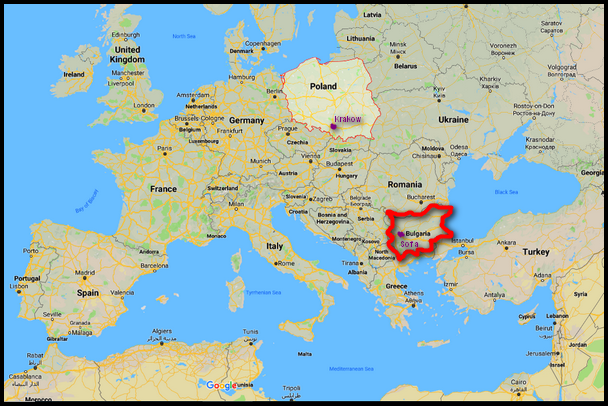 My First Impressions of Bulgaria
My First Impressions of Bulgaria
My very first impression of Bulgaria when I crossed the border from Macedonia, was of trees. Lots and lots of trees. Everywhere. Forested hills, rows of trees between fields, trees lining the highways.
Particularly compared to Macedonia and Kosovo, where I’d just spent three weeks, Bulgaria is a country filled with trees and forests. At least in western Bulgaria. I’ve yet to explore the rest of the relatively large country.
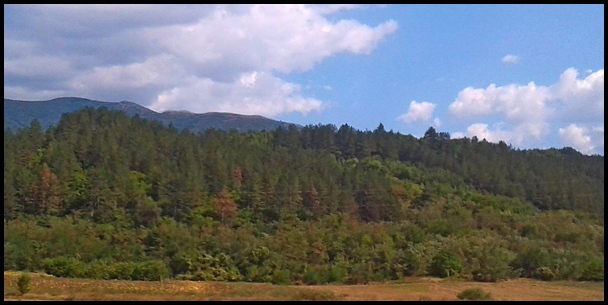 The other thing I noticed right away is the much grander scale of everything in Bulgaria, at least compared to its much smaller Balkan neighbors I’d explored (Montenegro, Albania, Kosovo, Macedonia).
The other thing I noticed right away is the much grander scale of everything in Bulgaria, at least compared to its much smaller Balkan neighbors I’d explored (Montenegro, Albania, Kosovo, Macedonia).
Immediately after crossing the border into Bulgaria, the highways suddenly became much bigger, with more substantial engineering, on par with highways in the USA.
The drastic change put me in mind of arriving in Mexico after traveling around the tiny Central American countries…or of landing in China after traveling through SE Asia.
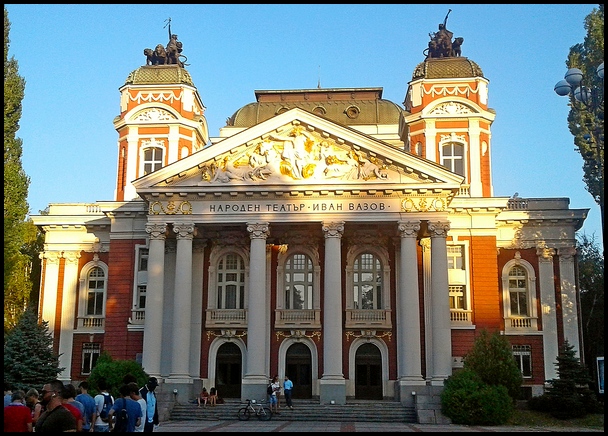
national theater – Sofia
Sofia – Bulgaria’s capital city
Reaching the outskirts of Sofia, I also immediately recognized that I was entering a city on a much grander scale than anything that exists in those other Balkan countries. Comparatively, Sofia is a huge city. A massive city. It’s much more like a western European city (though probably rather small comparatively).
Suburban apartment blocks go on an on. There’s a modern urban train system and an underground metro (subway). It took more than 30 minutes from the edge of Sofia to reach the main bus station in central Sofia.
Within Sofia the urban transport system makes getting around very fast & easy. When I arrived by bus from Macedonia to Sofia’s central train station, I simply took the Metro for two stations and then walked 10-minutes to my inner-city hostel.
I loved Sofia. It’s full of a diverse range of stunning historic buildings, from many different eras and architectural styles and religious persuations. Many of those historic buildings are massive.
There’s LOTs of history in Sofia and in Bulgaria, in general! It’s supposedly the second-oldest European country after Greece.
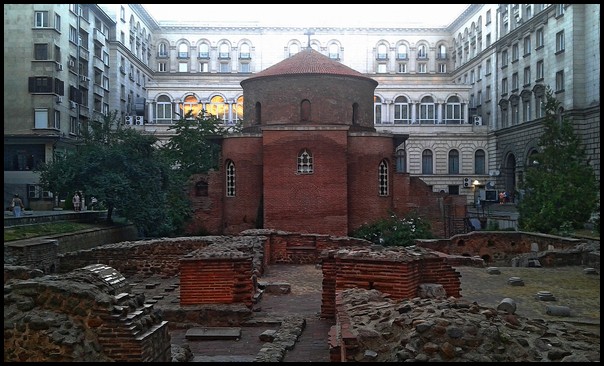
Sofia dates from way back in the 1200s! Over the centuries, there’s been three separate Bulgarian Empires, with domination by other empires in between.
Sofia has Ottoman Turk mosques with their round brick-n-stone main halls and a single round turret. There are grand Orthodox churches dating back to the 1300s, as well as a cathodic cathedral. The Balkan’s largest Jewish Synagogue is also located in Sofia, as well as a cute, colorful Russian church. These different ‘house of worship’ are all situated within a few blocks of each other.
Sofia also has massive stone communist-era government buildings, fancy Victorian buildings, a beautiful historic National Theater and stately old hotels, There are several archaeological sites, preserved and laid for display below street level all over the city.
And parks. Dozens of large, leafy parks, some with gardens, others open lawns, others like raw forests.
Sofia also has several great museums. And a surprising variety of great free walking tours.

Cyrillic
Language and Communicating in Bulgaria
Bulgaria’s Cyrillic language is baffling and somehow more confusing than, say, Japanese, because it uses many of our regular English letters like ‘H’ ‘N’ ‘A’ ‘E’, so it seems like one should be able to read it. But then the words are mixed with other exotic letters like ‘Ф ‘ and ‘Ѣ’.
On top of that, the Arabic letters are pronounced differently. ‘H’ is actually ‘N’. while ‘P’ is actually ‘R’… Cyrillic is, in fact, a completely different language that seems like it should be manageable. But isn’t.
Overall, Bulgarians do not speak English. So it can be a bit difficult communicating, especially since locals who don’t speak English aren’t really inclined to be helpful. I got the impression they’re sick of tourists trying to speak English with them.
However, there’s always someone around who does speak English. Even in public places like bus stations, stores, restaurants & street corners. And those English speakers are always eager to be helpful…and put their English skills to use.
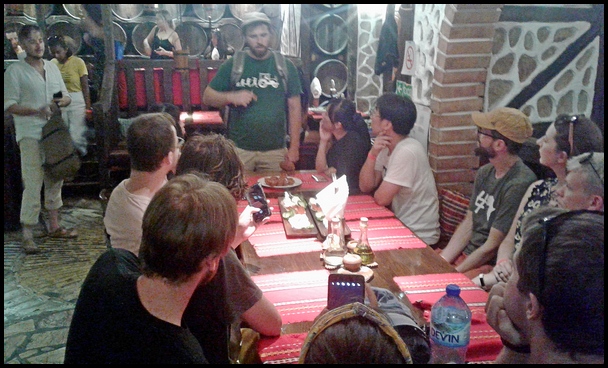
Free food walking tour – Sofia
Bulgarian currency and costs
Quite oddly, although Bulgaria is part of the EU, they dont’ use the Euro! They have the Bulgarian Leva. Roughly 1 Euro = 2 Leva… so everything seems to be half price !
As a result, Bulgaria is also shockingly cheap! I had been anticipating it being a bit more expensive than the other Balkan countries because it’s such a bigger, longer-established country and part of the EU.
So I was very pleasantly surprised to discover that Bulgaria is actually cheaper than its neighboring small countries! For instance, a typical meal for 6 Leva is just 3 Euro. A Metro ride in Sofia of 1.60 is just 0.80 Euro.
Food in Sofia is refreshingly diverse and shockingly inexpensive. Besides the usual gyros, donners, pizzas and burgers found abundantly all over the minor Balkan countries, in Sofia there are fantastic cafeteria-style restaurants, where several already-prepared dishes are on display.
Diners simply point out what they want from the diverse selection, pay and eat. It reminds me of eating in Thailand, Malaysia and Indonesia. Easy, fast, delicious and inexpensive.
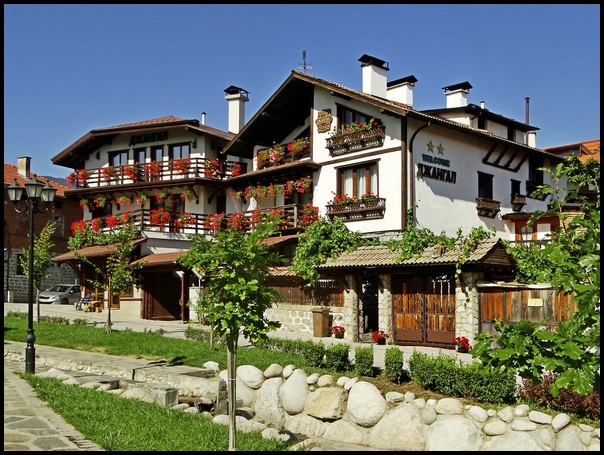 For a pleasant change, I was able to eat out every day at decent restaurants, enjoying a variety of different meals each day.
For a pleasant change, I was able to eat out every day at decent restaurants, enjoying a variety of different meals each day.
Besides the inexpensive, delicious food, accommodation is less expensive. Dorm beds cost as low as 6-7 Euro – and that’s for a bed in a 4-bed female dorm!
In the small ski resort town of Bansko I stayed at a private double room with private bathroom & balcony in the equivalent of a 3-star hotel, for just $11 US / 10 Euro per night. And that included buffet breakfast! I stayed six nights, greatly enjoying my privacy and relative luxury.
Museums range in price, some very cheap. Others dear. Second-hand clothing stores are phenomenally cheap, probably the cheapest I’ve seen in the world. I bought several dresses for as low as $0.70 US. And that included a new Designual designer dress worth 100 Euro!
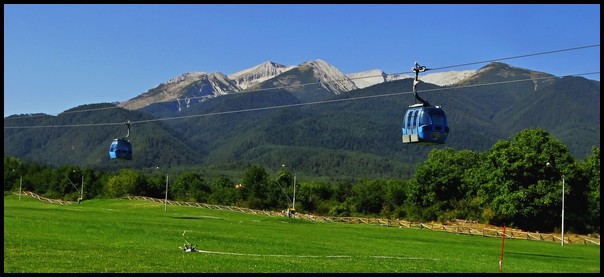 Western Bulgarian countryside
Western Bulgarian countryside
One week after crossing the border, I took a 3-hour bus ride from the capital city of Sofia to the small historic ski resort town of Ustron. My first impressions were confirmed. Trees and forests were everywhere. Pine forests and deciduous forests, both.
Western Bulgaria seems to consist primarily of low rolling hills interspersed with areas of high mountains, soaring up to over 2800 M / 9000+ ft. The countryside is pretty, the high bulky granite-topped mountains quite spectacular.
Ustron proved to be a wonderful, adorable little town set at the base of a mountain range with dozens of rocky peaks of 2600-2850 M / 8000-9000 ft. A river and a small canal run right through town. An utterly charming old town with cobblestone roads, wood & stone houses, hotels, restaurants & cafes is the center piece. Most likely I’ll return later this year.
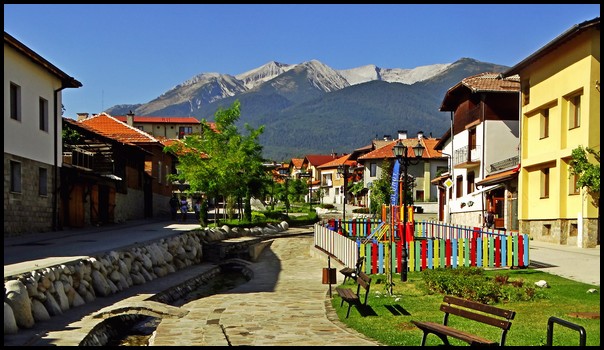 Final words…
Final words…
Thus far, I only spent two weeks in Bulgaria. And, in fact, that’s it for now. A family reunion in Poland has detoured me north for a while.
But from Poland I will travel slowly southward back to Bulgaria to spend another 4-6 weeks exploring the country’s many other interesting historic towns, national parks, mountains and the eastern coastline on the Black Sea.
So look for much more from me about lovely Bulgaria later this year!
In the meantime, you might also like:
===========================================












 Hi! I'm Lash, an American nomadic world traveler who's been traveling solo since 1998. I’m passionate about traveling the world nomadically and then sharing it all with you. I hope to inspire you to travel the world, to entertain you with tales from the road, and to help you reach your travel dreams. Welcome!
Hi! I'm Lash, an American nomadic world traveler who's been traveling solo since 1998. I’m passionate about traveling the world nomadically and then sharing it all with you. I hope to inspire you to travel the world, to entertain you with tales from the road, and to help you reach your travel dreams. Welcome! 




4 pings
10 Free Things to do in Krakow – Poland
2019/10/07 at 1:05 am (UTC 8) Link to this comment
[…] My First Impressions of Bulgaria […]
The Many Charms of Varna – Bulgaria
2020/08/27 at 7:41 pm (UTC 8) Link to this comment
[…] My First Impressions of Bulgaria […]
introduction to romania
2020/08/27 at 7:49 pm (UTC 8) Link to this comment
[…] My First Impressions of Bulgaria […]
introduction to Timisoara - Romania
2020/08/27 at 7:49 pm (UTC 8) Link to this comment
[…] My First Impressions of Bulgaria […]